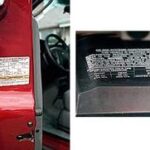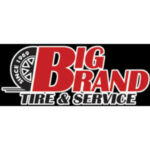As we prepare to go from the hot summer days into fall and winter, it may not be a bad idea to consider replacing the tires on your vehicle. Whether on a car, truck, or SUV, bad tires are like a time bomb. One minute, you’re happily driving and singing to some of your favorite music. The next minute, you are on the side of the road changing a flat while trying to avoid becoming road kill. And it always seems to happen on a day with the most extreme weather conditions. Most of the time, tire failure can be prevented by routine maintenance and by replacing tires with worn out tread. It is important to know how to select the right tires for your vehicle. There are many people that go into an auto shop with absolutely no Idea what’s going on. As a result, the mechanic sells you a set of tires that costs more than a down payment on a new car. Ok, maybe I’m exaggerating but you get the point. Here are a few tips on selecting the right tires for your car.
The first piece of advice that I can give anyone is not to be a cheap skate when it comes to selecting new or replacement tires. My friend once told me that he can get four tires for $100 from a ‘Mom-and-Pop’ auto garage. The very next week, he would be calling me from the side of the road. Why put tires on your car that lacks the quality you need to perform the way you want when on the road? Don’t buy tires that may last for only 30,000 miles when you travel more than 60,000 miles a year.
We all know what our tire measurements are and where to find them, right? For those people in the dark, the measurements can be found on the side of the tire and will read something like P195/70R14 (for example). Make sure that any tire you purchase has the correct measurements. Your owners manual should have the measurements of the tires for your car in case you are not sure. Also on the side of your tire, you will find codes that will indicate your tire’s performance. The tread wear is number-coded and represents how long the tread will last on your tires. The traction code is represented by a letter (A,B, or C) and indicates how well your tire(s) perform in different road conditions. The Temperature index is also represented by alphabet code, representing how much resistance your tire has to certain temperatures. When choosing new tires, make sure you check with the auto/tire shop for the tires that will give you the best performance on the road.
When it is time for you to select new tires, consider the type of driving you do before you go and purchase the biggest wheel you can find from Goodyear. If you are a driver that lives on the highway like I do or if you travel through the city most of the time, stick to the all-season tires. All-season tires are what comes with a new car and are good for driving all year round, even through inclement weather conditions. However, if you live in a region where it rains or snows more than the sun shines, you should consider wet-weather tires. These tires are basically like the all-season tires but with an upgraded feature that allows you to have much better traction in wet weather conditions.
Drivers with sports cars and the need for speed should buy performance tires. They are built for high speeds, sudden brake stops and sharp turns. Unlike all-season tires, performance tires make much more noise and will wear out much faster, due to the soft tread.
For the drivers with big trucks and SUV’s who do off-road driving such as construction work or just off-road adventures, all-terrain and off-road tires would be the best choice. These tires are not good for the highway because of the noise they make and the style of tread. The tread on all-terrain and off-road tires will wear out much faster when driven on smooth roads and they will lower your gas mileage dramatically.
If you are only purchase one or two tires, make sure that the newest are placed in the front. The tires that were originally in the front can now be placed in the back. Make sure that you keep a spare tire and the proper tools in your trunk in case of an unforeseen emergency. Spare tires should be the same size of the original tires on your car.
Reference:
- Two good places to purchase tires are Goodyear at goodyear.com and National Tire and Battery at www.ntb.com



